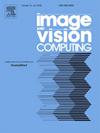用于多目标跟踪的遮挡相关图卷积神经网络
IF 4.2
3区 计算机科学
Q2 COMPUTER SCIENCE, ARTIFICIAL INTELLIGENCE
引用次数: 0
摘要
最近,图形卷积神经网络(GCNN)对多目标跟踪(MOT)进行了改进,因为它在描述交互特征方面表现出色。然而,如果一个节点有更多的邻居,GCNNs 会倾向于为节点特征分配较小的比例,这给区分具有相似邻居的物体带来了挑战,而这在密集场景中很常见。本文设计了一种与遮挡相关的 GCNN(OR-GCNN),并在此基础上进一步构建了交互式相似性模块。具体来说,交互式相似性模块首先使用可学习权重来计算小轨迹和检测对象之间的边缘权重,从而平衡外观余弦相似性和交集大于联合(IoU)。然后,该模块借助多层感知器(MLP)产生的闭塞权重确定节点特征的比例。然后,这些闭塞权重、边缘权重和节点特征将提供给我们的 OR-GCNN 以获得交互特征。最后,通过将交互式相似性集成到一个通用的 MOT 框架(如 BoT-SORT)中,我们得到了一个跟踪器,它能有效缓解密集 MOT 任务中的问题。在 MOT16 和 MOT17 基准上的实验结果表明,我们的模型在 MOT16 和 MOT17 上的 MOTA 分别为 80.6 和 81.1,HOTA 分别为 65.3 和 65.1,优于 ByteTrack、BoT-SORT、GCNNMatch、GNMOT 和 GSM 等最先进的跟踪器。本文章由计算机程序翻译,如有差异,请以英文原文为准。
Occlusion-related graph convolutional neural network for multi-object tracking
Multi-Object Tracking (MOT) has recently been improved by Graph Convolutional Neural Networks (GCNNs) for its good performance in characterizing interactive features. However, GCNNs prefer assigning smaller proportions to node features if a node has more neighbors, presenting challenges in distinguishing objects with similar neighbors which is common in dense scenes. This paper designs an Occlusion-Related GCNN (OR-GCNN) based on which an interactive similarity module is further built. Specifically, the interactive similarity module first uses learnable weights to calculate the edge weights between tracklets and detection objects, which balances the appearance cosine similarity and Intersection over Union (IoU). Then, the module determines the proportion of node features with the help of an occlusion weight comes from a MultiLayer Perceptron (MLP). These occlusion weights, the edge weights, and the node features are then served to our OR-GCNN to obtain interactive features. Finally, by integrating interactive similarity into a common MOT framework, such as BoT-SORT, one gets a tracker that efficiently alleviates the issues in dense MOT task. The experimental results on MOT16 and MOT17 benchmarks show that our model achieves the MOTA of 80.6 and 81.1 and HOTA of 65.3 and 65.1 on MOT16 and MOT17, respectively, which outperforms the state-of-the-art trackers, including ByteTrack, BoT-SORT, GCNNMatch, GNMOT, and GSM.
求助全文
通过发布文献求助,成功后即可免费获取论文全文。
去求助
来源期刊

Image and Vision Computing
工程技术-工程:电子与电气
CiteScore
8.50
自引率
8.50%
发文量
143
审稿时长
7.8 months
期刊介绍:
Image and Vision Computing has as a primary aim the provision of an effective medium of interchange for the results of high quality theoretical and applied research fundamental to all aspects of image interpretation and computer vision. The journal publishes work that proposes new image interpretation and computer vision methodology or addresses the application of such methods to real world scenes. It seeks to strengthen a deeper understanding in the discipline by encouraging the quantitative comparison and performance evaluation of the proposed methodology. The coverage includes: image interpretation, scene modelling, object recognition and tracking, shape analysis, monitoring and surveillance, active vision and robotic systems, SLAM, biologically-inspired computer vision, motion analysis, stereo vision, document image understanding, character and handwritten text recognition, face and gesture recognition, biometrics, vision-based human-computer interaction, human activity and behavior understanding, data fusion from multiple sensor inputs, image databases.
 求助内容:
求助内容: 应助结果提醒方式:
应助结果提醒方式:


